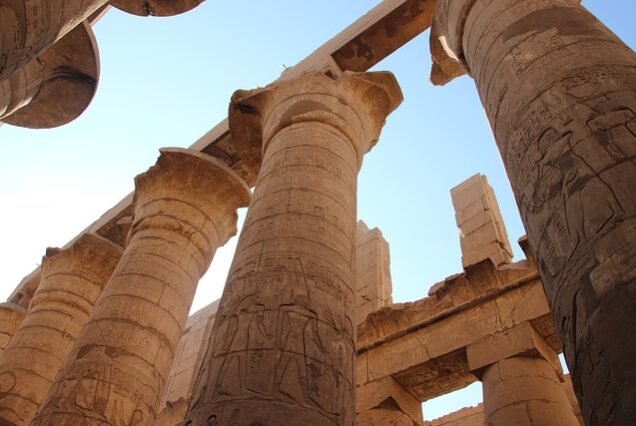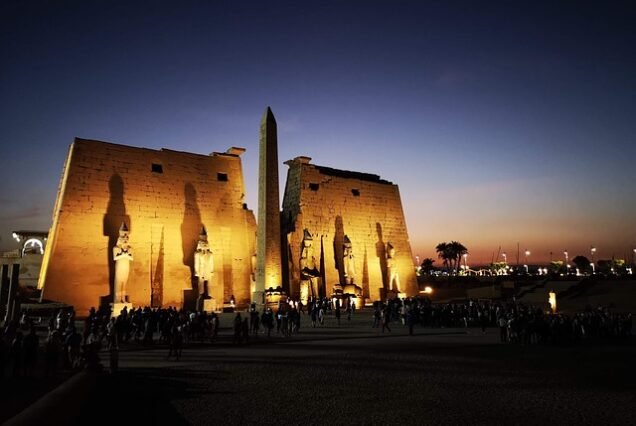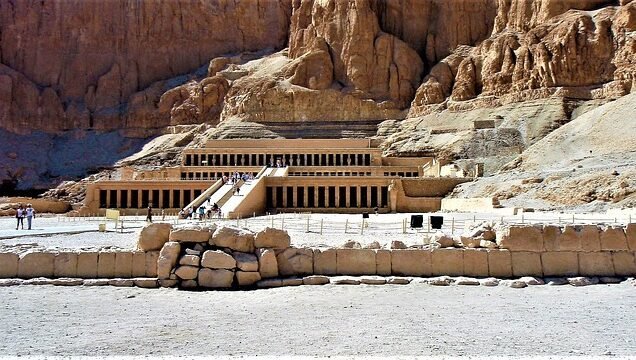Luxor Full Day Tour Museum & Karnak Temple
Pickup
BUS
Duration
7-Hours
Country
Luxor
Overview
Explore Luxor’s East Bank: Luxor Full Day Tour Mummification Museum & Karnak Temple
Embark on the ultimate one-day archaeological adventure in Luxor, designed to uncover the rich history of ancient Egypt. This guided tour includes visits to the Luxor Museum, Mummification Museum, and the awe-inspiring Karnak and Luxor Temples. Enjoy the convenience of a private guide, included lunch, sightseeing tickets, and seamless transfers.
– Highlights of the Tour:
– Discover the Karnak Temple Complex, the world’s largest temple site, dedicated to the gods Amun, Mut, and Khonsu.
– Marvel at the Luxor Temple, built by Ramses II, one of ancient Egypt’s most prolific builders.
– Explore the Mummification Museum, a unique exhibit showcasing the intricate art of preserving the dead in ancient Egypt.
– Visit the Luxor Museum, featuring a stunning collection of mummies and treasures from Tutankhamun’s tomb.
Experience Luxor’s most iconic archaeological sites with guaranteed daily departures and unbeatable online prices. Don’t miss out on this unforgettable journey into ancient Egyptian history.
Book your Luxor Full-Day Tour today!
The Highlights of the Tour:
- Visit The Temple of Karnak
- Visit the Temple of Luxor
- Visit the Mummification Museum
- Visit the Luxor Museum
Included/Excluded
- Private Egyptologist guide.
- Entrance fees to all the mentioned sites.
- Lunch at Local Restaurant
- All transfers by a private air-conditioned vehicle.
- Pick up services from your hotel & return.
- Tipping for guide & driver
- Any Extra not mentioned
Tour Plan
Luxor Full Day Tour Mummification & Luxor Museum with Karnak Temple
Look at Egypt Tours Guide will pick you up from your hotel or Nile cruise in Luxor to start an archeological day tour in Luxor start by visiting the Complex of Karnak, among Luxor’s monuments, the Temple Complex of Karnak has to be its most astonishing and beautiful feat. Within its precincts are the Great Temple of Amun, the Temple of Khonsu, and the Festival Temple of Thutmose III, as well as surrounding minor temples and sanctuaries.
The complex is not built into a single unified plan. Instead, it represents the building activity of many successive rulers, who vied with one another in adding to and adorning this great national sanctuary, which became the most important of Egypt's temples during the New Kingdom.
After your tour in the Karnak temple head to the Temple of Luxor was dedicated to the mighty Theban triad of Amun, Mut, and Khonsu. The core of the temple was built by Amenhotep III the grandfather of King Tutankhamun (1390–1352 BC), and even though it was embellished and expanded several times, its plan remains much simpler and more compact than the complex in Karnak then, have your lunch at a traditional restaurant then continue to the Mummification Museum in Luxor intended to provide an understanding of the process to preserve the body. The ancient Egyptians not only applied to embalm dead humans but also to many animals (Cats, Fish, Crocodiles & Dogs, etc ). God Anubis (the Jackal) was the god of embalming and mummification. The mummification process is believed to have taken around 70 days, accompanied by many rituals. The organs of the deceased were carefully removed through a small incision (10 cm) in the left side of the body and preserved in Canopic jars. The body was then dried in sodium nitrate, or nitrate salt brought from Wadi El Natron, for about 40 days, and finally wrapped in bandages of linen. Magical amulets were placed within the wrappings on various parts of the body to protect the deceased. The family then received the body and placed it in a coffin for burial.
The Mummification Museum provides a comprehensive view of the entire process through the display of many tools, objects, and equipment used for the process, as well as an explanation of the ritual and religious significance of the practice. Canopic jars, elaborately decorated coffins, mummified remains; amulets, and statues of deities are among the many objects on display.
After that end your tour by visiting the Luxor Museum one of the best places to visit in Luxor most of the artifacts displayed at the Luxor Museum were discovered in the area of ancient Thebes (modern Luxor). Highlights of the collection include masterpieces of pharaonic art as well as examples of everyday objects. Several galleries are devoted to a spectacular group of statues found in 1989 hidden beneath the floor of the Luxor Temple; there is also a newly built annex dedicated to Egypt's Golden Age (the New Kingdom, ca. 1550-1070 BC), which includes two royal mummies and a short film on ancient papyrus and vase-making after this full-day back to your hotel or Nile cruise.







